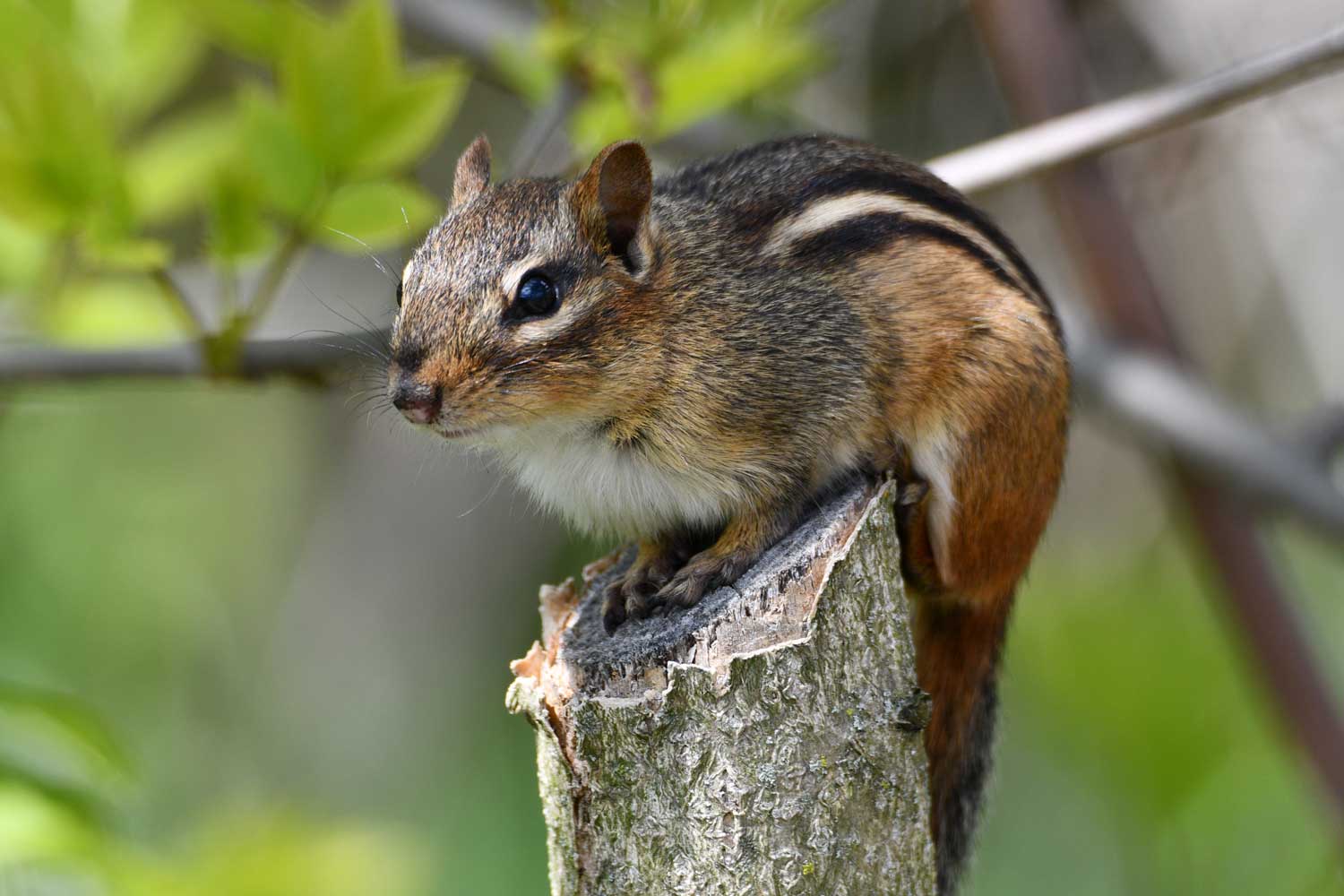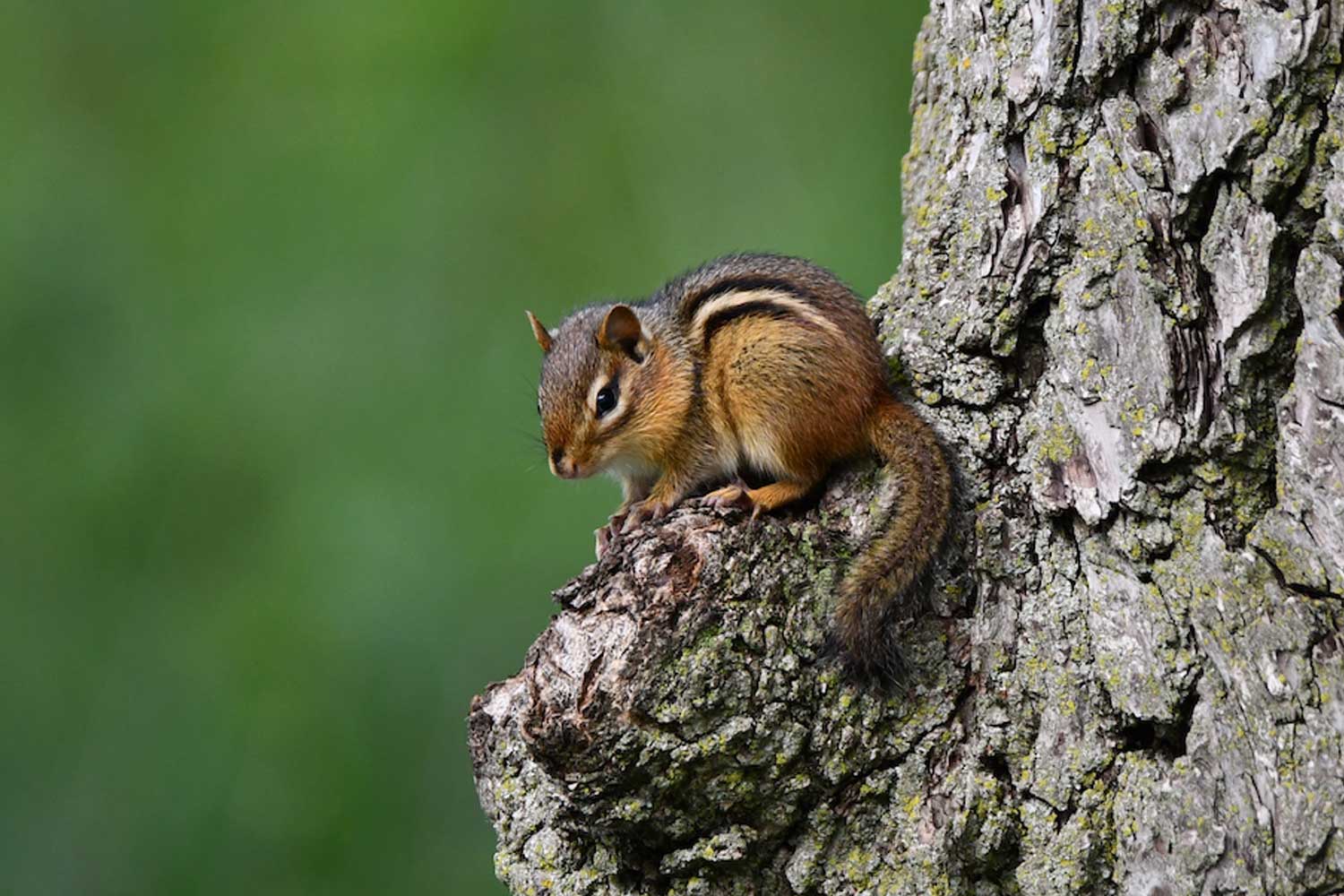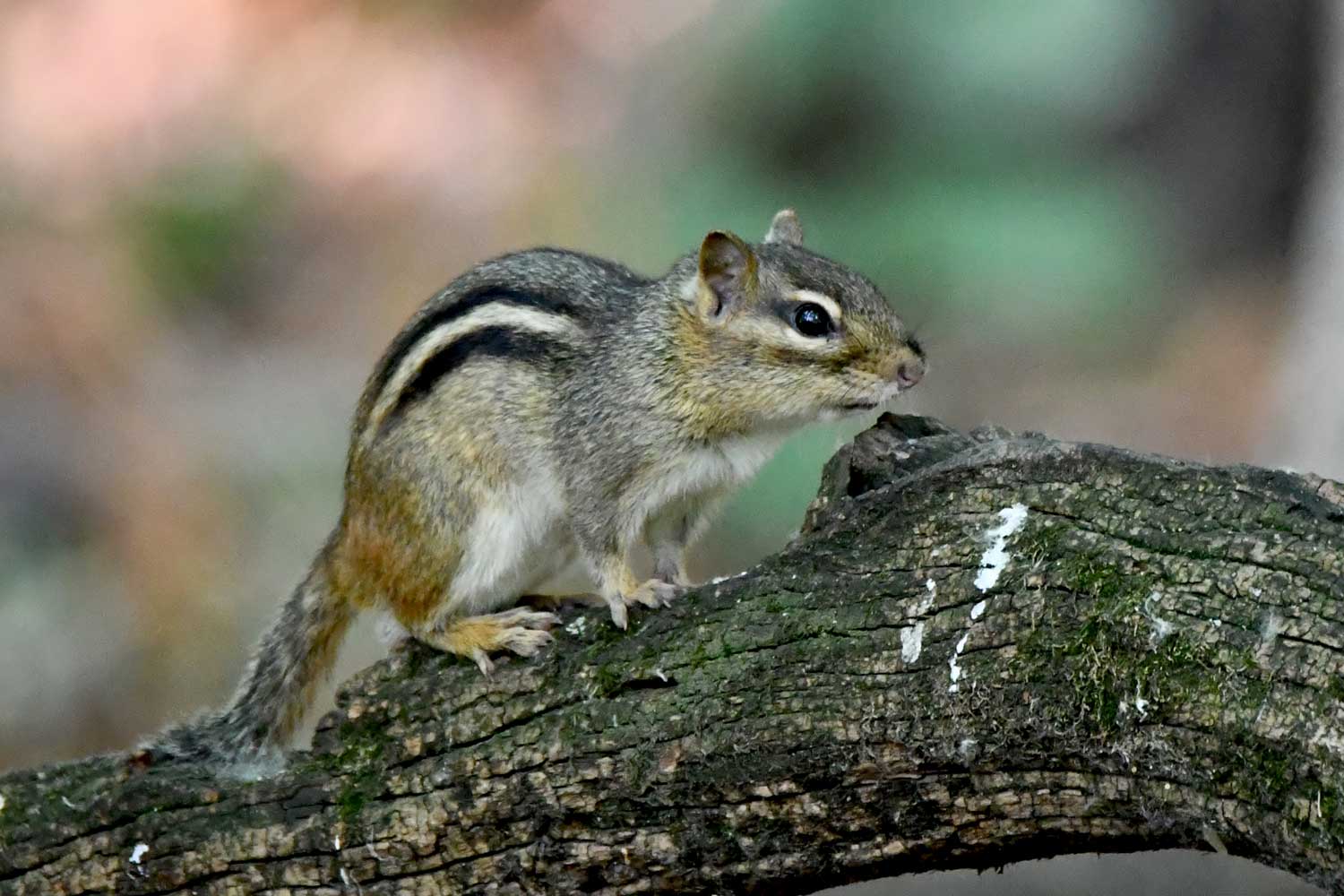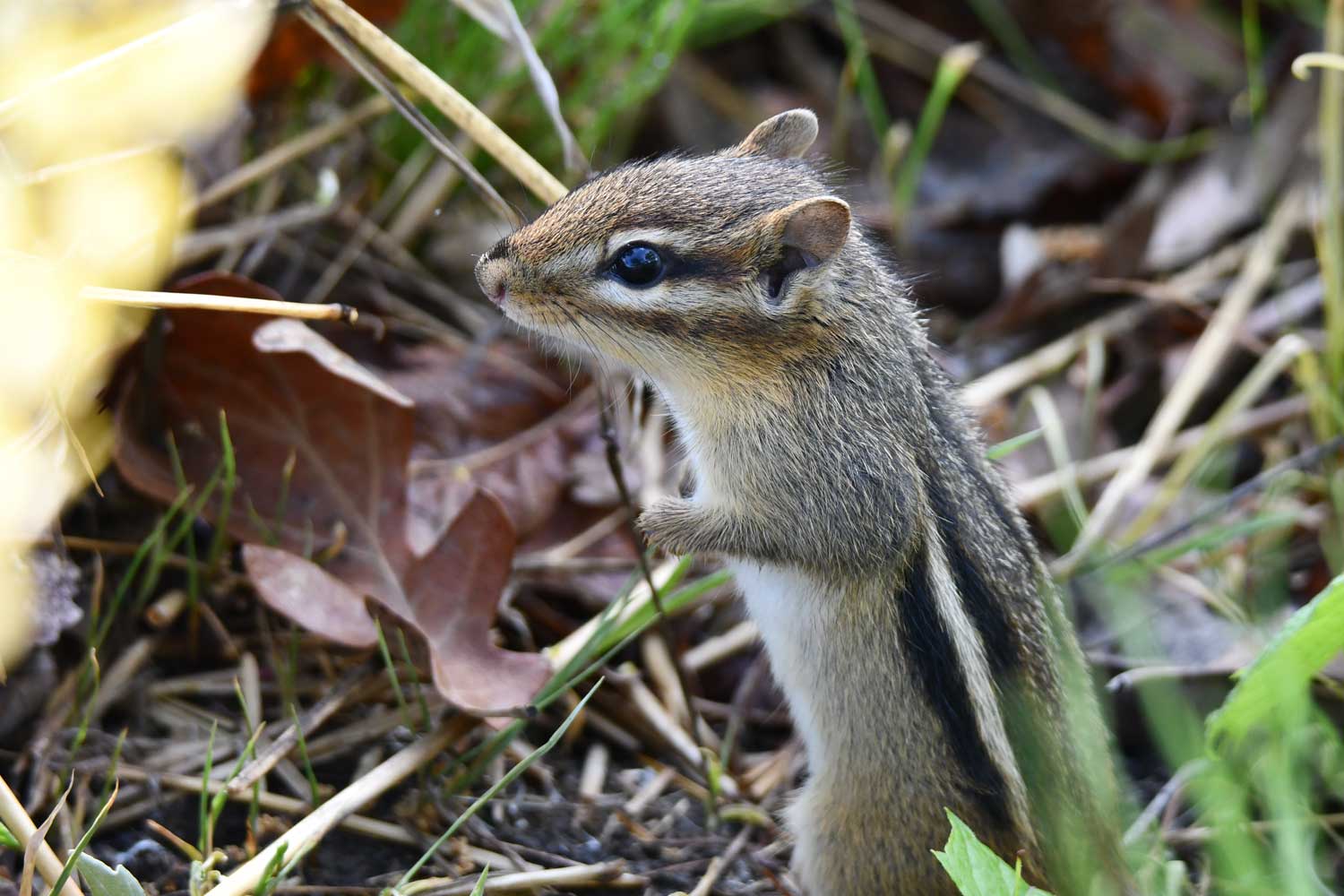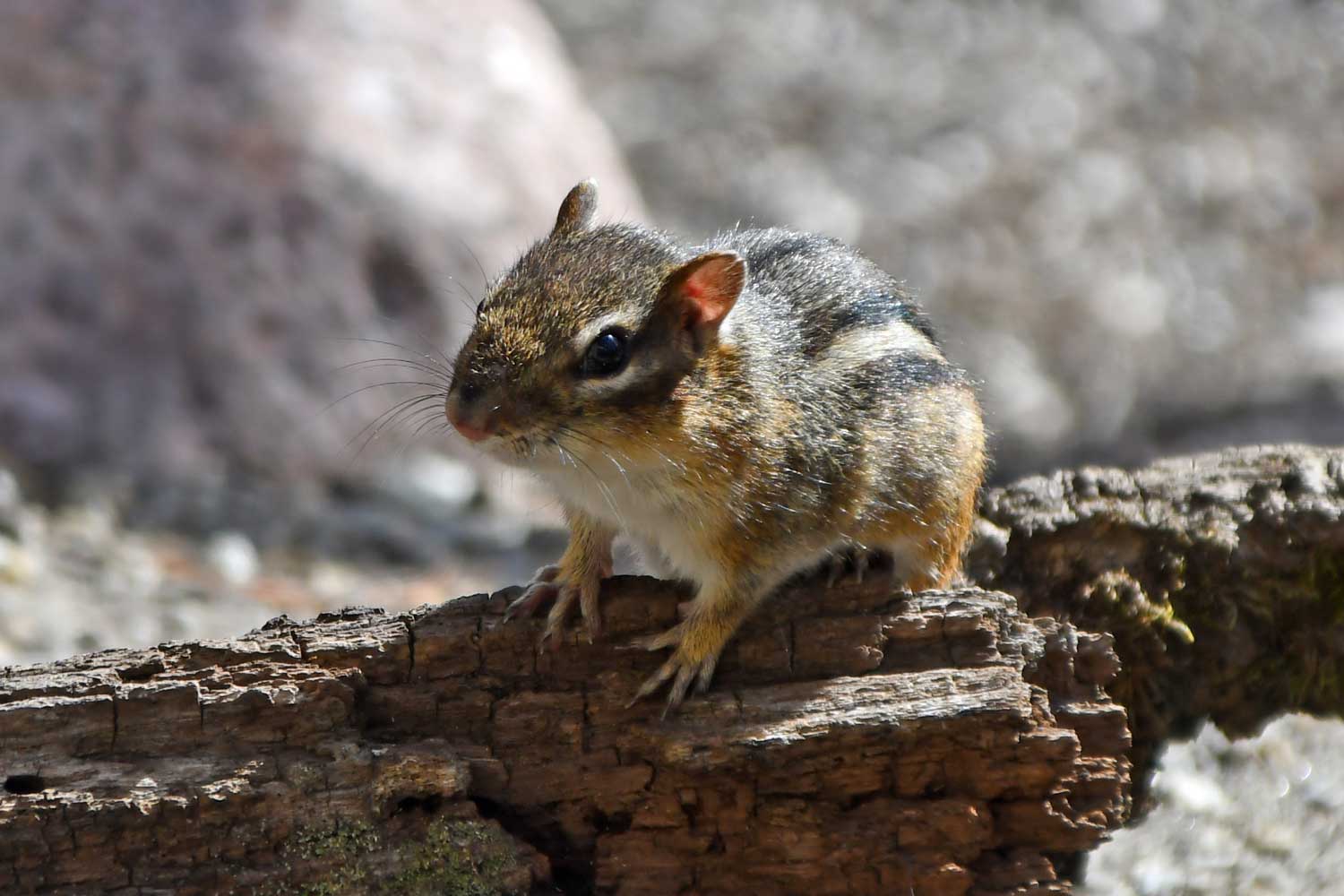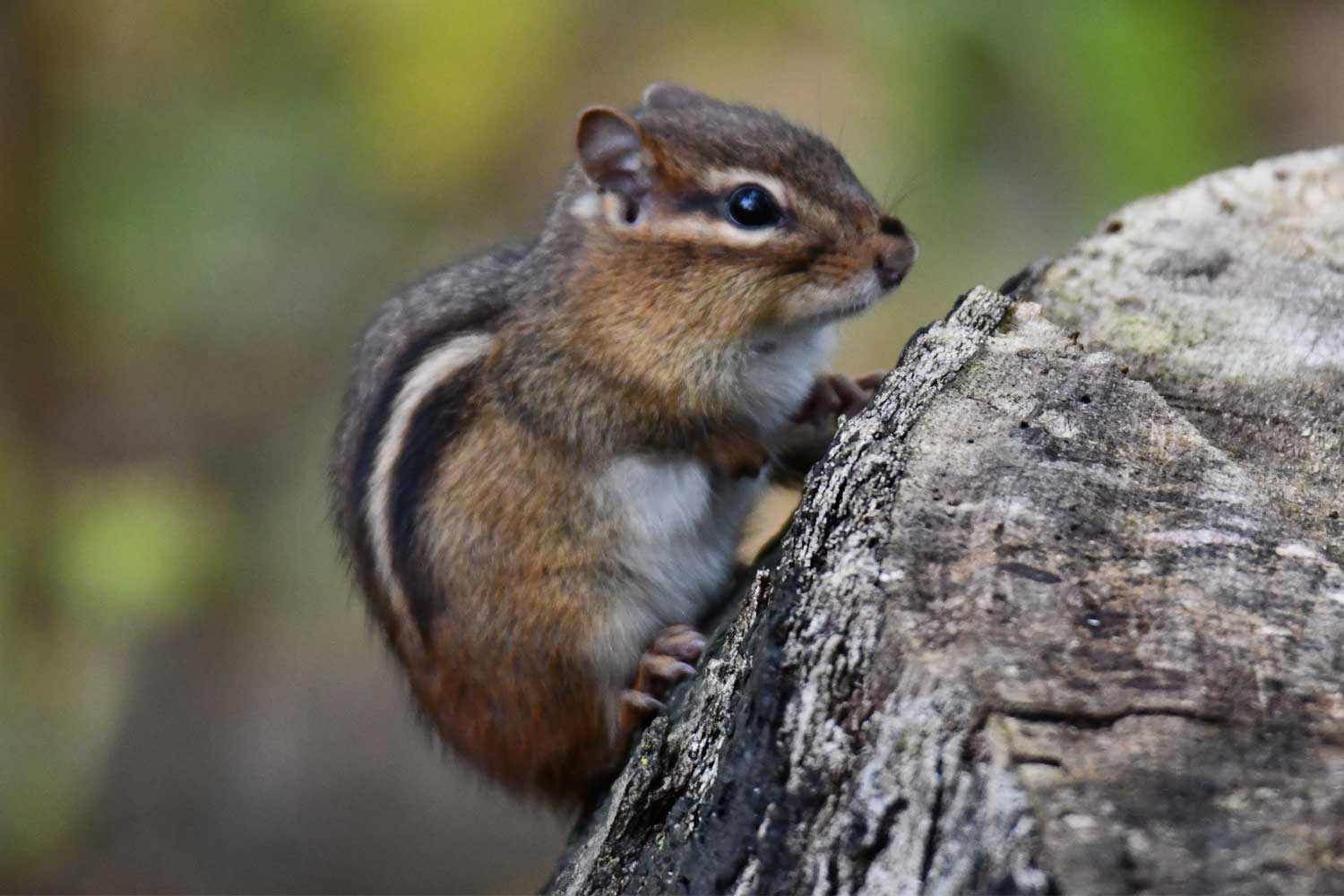Five fast facts about chubby-cheeked chipmunks
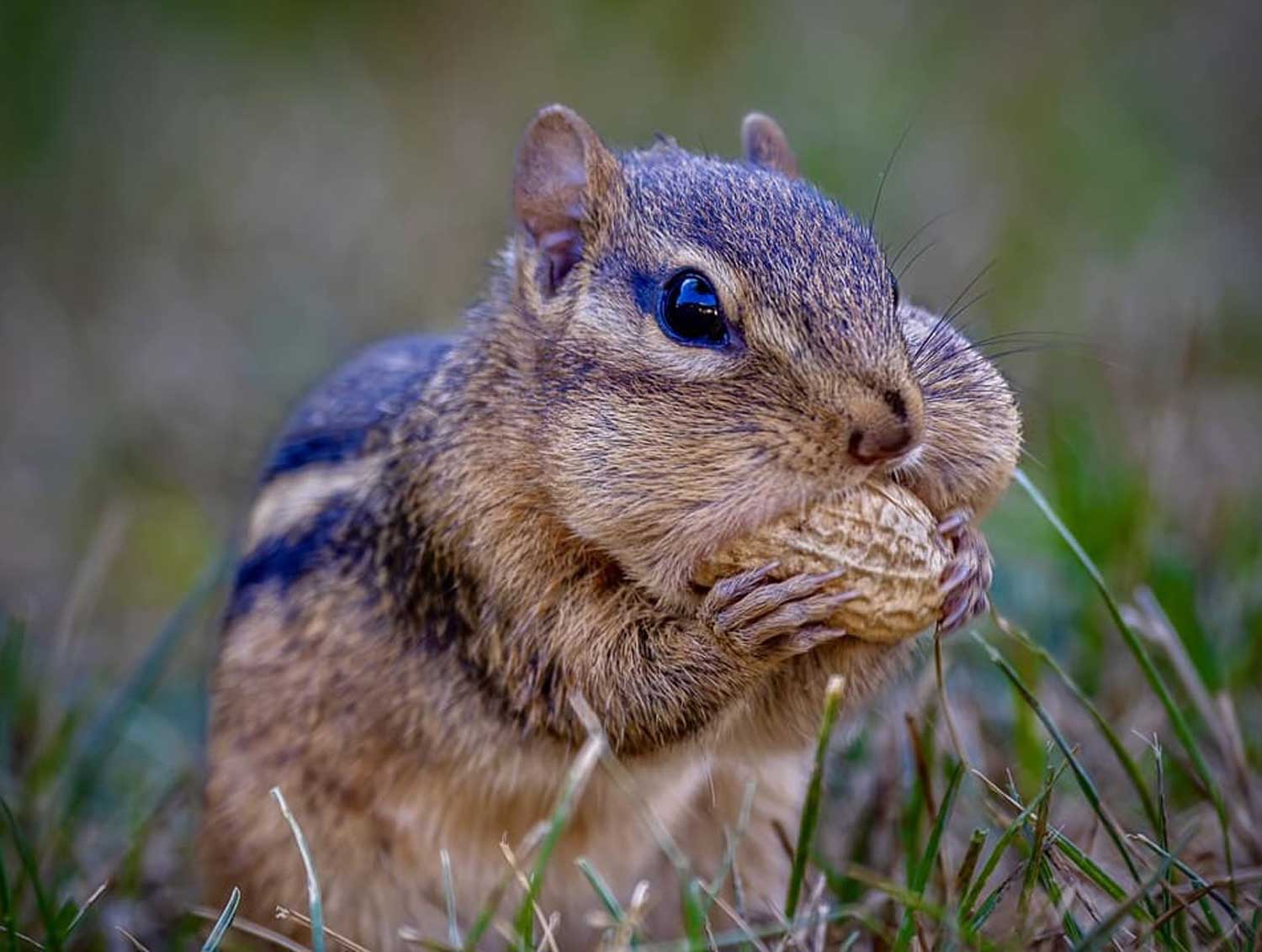
In North America, the rodent family of mammals is a big one, including everything from big beavers to tiny pygmy shrews. Somewhere in the middle of the rodent size chart is the eastern chipmunk, a common and familiar animal that some people may not realize is a rodent.
Chipmunks prefer forested habitats, particularly beech-maple forests, but they are adapted to more open areas as well, according to Animal Diversity Web. They are native to North America and can be found across much of the eastern United States and Canada.
Eastern chipmunks are typically solitary, and they are diurnal, Animal Diversity Web reports. They are most active at mid-morning and mid-afternoon. Chipmunks don't hibernate in the winter because they are too small to accumulate the necessary fat stores. They will sleep and rest in their burrows for long stretches, but they will emerge during more mild winter weather to forage for food or gather food from their caches.
They are squirrels
Chipmunks are squirrels. They don't spend time in trees like our familiar gray squirrels and fox squirrels, but that's because they are ground squirrels, not tree squirrels. Other ground squirrels that live in Illinois include thirteen-lined ground squirrels, Franklin's ground squirrels and woodchucks. Yes, woodchucks are squirrels too.
Eastern chipmunks are the smallest of our ground squirrels, weighing between 2 ounces and 5 ounces and measuring 12 inches or less, including their tails. The fur on their backs, side and cheeks is striped, with five stripes alternating light and dark brown, and they have white or buff fur on their bellies, according to Wildlife Illinois. Unlike tree squirrels, chipmunks do not have long, fluffy tails. Instead, they have furry, somewhat flattened tails.
The eastern chipmunk is one of 25 chipmunk species in the world, and all but one lives in North America. The exception is the Siberian chipmunk, which lives in Asia and parts of Europe, according to National Geographic.
They aren't selective eaters
Eastern chipmunks are omnivores, and they eat a wide variety of foods. Their primary food sources include fruits, seeds and nuts, Animal Diversity Web reports. Other food sources include mushrooms, worms, slugs, insects and bird eggs.
Chipmunks don't always eat food as they find it. They are scatter hoarders, meaning they will create caches scattered across their home territory where they can store uneaten food for later. They do this all year, but their caching of food picks up in early fall as they begin to prepare for winter, according to Animal Diversity Web. They will even store some food in the rooms in their underground burrows for easy access in winter.
Those chubby cheeks can hold a lot
Chipmunks' cheeks are their most well-known feature, and cartoons depicting their chubby cheeks stuffed with food aren't that much of an exaggeration. Their cheek pouches can hold as many as 12 acorns, 31 corn kernels or 70 sunflower seeds, Northern Woodlands magazine reports.
All those morsels of food can be tucked into pouches in each cheek, and each pouch can extend to be about three times as big as their heads, Treehugger reports. Being able to hold a lot of food at once is useful because of how much time they spend foraging for food. They can collect as many as 165 acorns a day, so being able to carry a dozen at a time allows them to be more efficient.
They communicate a lot
We associate many animals with the sounds they make, and although we may not have a sound we associate with chipmunks, they are quite vocal. They rely on a variety of vocalizations to communicate with other chipmunks, primarily for two reasons: to alert others to nearby predators and to defend their territory, Animal Diversity Web reports.
Never heard a chipmunk before? You may have without even realizing it. Their vocalizations are quite high-pitched and are often mistaken for bird calls, according to Treehugger.
Among the eastern chipmunks' sounds are chips, chucks and trills. Their trills are short sounds used when they are being chased by a predator. Chips and chucks are repeated vocalizations that can go on for as long as 30 minutes. Aside from vocalizations, the chipmunks also rely on chemical signals to communicate. These chemical signals are typically passed along when they touch noses or sniff hindquarters as they establish territories and pair up for reproduction.
They prefer life underground
It's certainly not uncommon to see chipmunks scurrying around above ground, but they are burrowing animals that spend a lot of their time below ground, Animal Diversity Web reports. They typically construct a burrow in the middle of their home territory, carving it out a few feet underground. The burrows can include several compartments, or rooms so to speak. One of the rooms will serve as their nest, and the others are used for food storage.
One reason they prefer underground living to life aboveground: There are fewer predators down there. Chipmunks are hunted by many animals, including bobcats, coyotes, foxes, raccoons, snakes, raptors and even sometimes squirrels, Treehugger reports. Even our pets will sometimes pounce on chipmunks. To help evade capture, they typically stay near their burrows so safety is never too far away.
